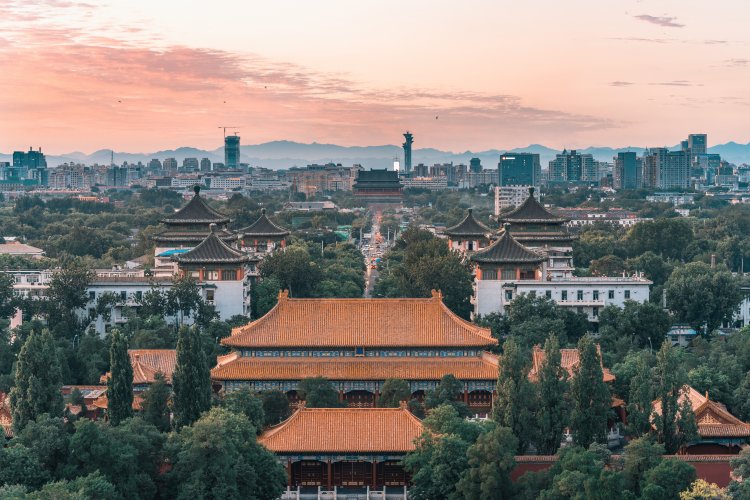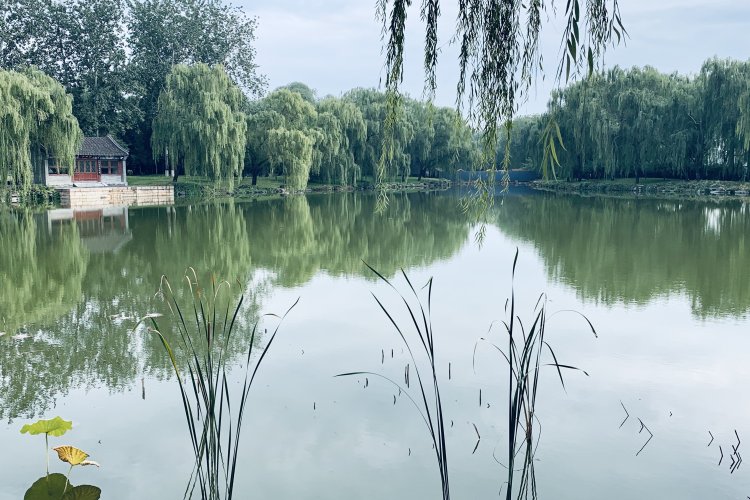The Horrifying History behind Beijing's Most Notorious Execution Grounds
The Halloween season is an excellent time to explore the spooky side of Beijing, and few places in the capital are as soaked in blood and steeped in the supernatural as the now rather banal neighborhood outside the Caishikou Subway Station. For centuries, this area was famous for two things: being one of Beijing’s largest vegetable markets; as well as the place where thousands of prisoners met a grisly end at the hands of imperial executioners. Every autumn, prisoners were taken to Caishikou via the Xuanwumen (which earned the gate the happy moniker of “The Gate of Death”) at dawn. The condemned were lined up east to west, had their necks stretched with a rope, and awaited the chop.
Losing a head was not the worst possible outcome of a one-way trip to Caishikou. Authorities would sentence those accused of the most severe crimes to death by lingchi, the punishment of slow slicing, or, as sensationalist foreign observers named the sanction: Death by 1000 Cuts.

Consistent with the entrepreneurial spirit of imperial-era Beijing residents and government officials, a well-placed gift or bribe could mitigate some of the worst pain of the execution. A local pharmacy did a good business in “numbing powders” (opiates and the like), which could render a victim nearly senseless at the moment when blade met neck.
Executioners tasked with slow slicing might take pity, or be paid to have pity, on their victims and make the first few cuts fatal. As with decapitation, the punishment of slow slicing was less the pain inflicted on the prisoner than the possibility that dismemberment would follow the victim into the afterlife and beyond. Eunuchs were known to keep their “possessions” in a small jar so they could be buried whole upon death; the idea of facing the hereafter in less pieces was nearly as horrifying for the condemned as the actual act of execution.
The executions were also designed to be a public spectacle. Caishikou was one of the busiest intersections and markets in the Outer City of Beijing. Crowds would gather to watch the prisoners die, and not all spectators were local residents. A scene in Harold Acton’s roman à clef about life in Beijing during the 1930s, Peonies and Ponies, describes a group of foreign residents turning the executions into a macabre tourist attraction, combining the spectacle of death with a trip to the nearby Temple of Heaven. Photographs featuring the bodies of Chinese prisoners executed on the orders of the foreign powers following the Boxer War of 1900 were used to make postcards. [Warning: Link contains very disturbing and graphic images]
It's no wonder some of the deceased might be inclined to hang around the areas as unsettled spirits.

Some of the more notorious ghosts are those of famous upright officials wrongfully sentenced to death by their political enemies. The Six Gentleman of 1898, part of a group of young officials who urged the Guangxu Emperor to reform and open his empire, met their end here, including the famous polymath scholar Tan Sitong after the reform movement ran afoul of the powerful Empress Dowager Cixi and conservatives at court. The Ming Dynasty general Yuan Chonghuan, at the time one of the few military men who enjoyed success on the battlefield against the growing Manchu threat on the frontier, was falsely accused of treason and treachery.
On Sep 22, 1630, General Yuan was taken to Caishikou in a wooden cage, his head and arms locked in a wooden pillory. Dragged before the mob, the former military man was sliced to death. A grim legend even suggests the crowd participated, ripping the flesh from their former protector. Later, the Ming Court discovered General Yuan had been the victim of a devious disinformation campaign hatched by their Manchu enemies to eliminate one of their most feared battlefield opponents.
There is debate about the exact location of the former execution grounds relative to the modern neighborhood, and Caishikou was not the only place in Beijing used for executions. Still, the number of people who died at Caishikou, the reputation of some of the most famous victims, and the lingering stories of hauntings, ghosts, and wandering spirits make the area one of the creepiest parts of the capital.
About the Author
Jeremiah Jenne earned his Ph.D. in Chinese history from the University of California, Davis, and taught Late Imperial and Modern China for over 15 years. He has lived in Beijing for over two decades and is the proprietor of Beijing by Foot, organizing history workshops, lectures, education programs, and walking tours of the city.
READ: Story of the 'Jing: When Beijing's Most Famous Sites Opened Their Doors to the Public
Images: Wikicommons, Unsplash, Pexels







